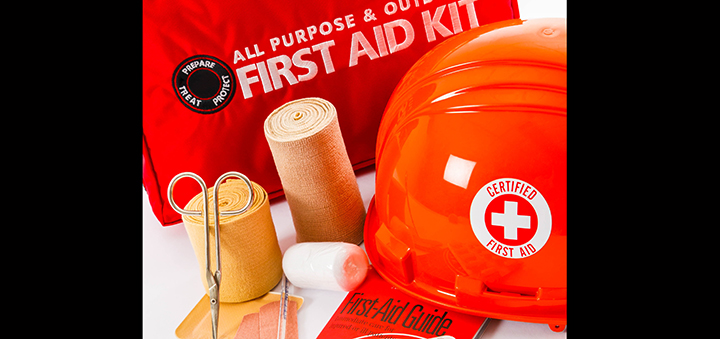The Benefits Of Getting Certified In Pet First Aid
Published:
May 18th, 2023
By:
Sarah Genter
 Getting certified in pet first aid and CPR can help your own pets and other's pets in the event of injury, choking, or other emergency. In addition to getting certified, starting a pet first aid kit at home helps you prepare, so you have what you need on hand in the event of emergency. (Sun File Photo)
Getting certified in pet first aid and CPR can help your own pets and other's pets in the event of injury, choking, or other emergency. In addition to getting certified, starting a pet first aid kit at home helps you prepare, so you have what you need on hand in the event of emergency. (Sun File Photo)
Before I began attending QC Pet Studies to become a certified dog trainer, I had never thought about first aid or CPR for my pets. Before I got my dog Penny last fall I already had three cats, and I had never seen any of them choke on anything, get injured, or really be in any kind of distress.
But, the very first unit of my dog training course had a module entirely about safety, and within that were the basics of dog first aid and CPR. Not only was it fascinating, but it made me realize how woefully unprepared I would have been in the event one of my pets got hurt.
While the information on dog first aid and CPR found within the course were pretty detailed, I wanted to learn more and really feel prepared for possible emergencies with my animals. So, I got certified in pet first aid and CPR!
After a quick Google search, I discovered the Red Cross actually offers a fully online dog and cat first aid and CPR certification course. It’s only $25 and (unless you’re like me and take detailed notes on the entire course) takes just 35 minutes to complete.
The course covers vital signs, dehydration, breathing and cardiac emergencies, wounds and bleeding, seizures, pet first aid kit supplies, CPR, and preventative care for cats and dogs.
So, why get certified in pet first aid and CPR? Obviously, if you’re a pet owner, it never hurts to have more knowledge on how to keep your furry family members safe and healthy. Even if you have fully cat- or dog-proofed your home, the possibility of accidents and emergencies are still possible.
One of my cats has managed to escape the house a few times, and on one of those occasions she was gone overnight. Had she come home with an injury, at the time I wouldn’t have known what to do besides schedule a vet appointment.
My two other cats, Stuart and Mongie, are siblings who love to play fight. More than once I’ve found Stuart with a puffy eye, or Mongie with a scratch on her ear. While these aren’t serious injuries, I feel much better knowing how to care for their wounds if needed, and what signs to watch for that indicate infection.
My pets are also notorious for getting into things they shouldn’t. Both my cats and dog try to eat things like plastic, plants, rocks, string, and plenty of other things they shouldn’t ingest.
Remember how I said before I got my dog I had never seen any of my pets choke? Well, shortly after learning about dog first aid and CPR at QC Pet Studies, Penny choked on something. While it was a scary experience, I was so relieved that instead of panicking about what to do, I was able to immediately take action.
Having a solid understanding of pet first aid and CPR prepares you for both minor injuries that don’t need veterinary attention and emergencies that could be life-threatening for your pet.
A major emergency such as your pet being hit by a car or attacked by another animal would require an immediate trip to the vet, and a pet first aid certification equips you with the knowledge of how to care for your pet until you can get them there, which could potentially save their life.
Additionally, incidents that may warrant a vet visit but aren’t an emergency may require you to care for a wound for a few days before you can get in for an appointment. Although I’m sure a vet’s office would tell you what to do in the meantime, being certified in pet first aid would definitely make me feel more confident in caring for my pet’s injuries until they saw the vet.
Knowledge of pet first aid and CPR can benefit other pet owners as well. You may be out for a walk, at the dog park, or even visiting a friend or family member when another person’s pet gets injured. While a human experiencing an emergency can ask if anyone’s a doctor or knows CPR, it’s probably less likely that anyone around would know how to help an injured or choking animal.
But a certification in pet CPR and first aid would give you the skills and knowledge to step in and help if someone else’s pet has an emergency. You could even save that animal’s life.
There are so many benefits to getting certified in pet first aid and CPR, and it’s so easy to do. It takes less than an hour of your time, but the knowledge you’ll walk away with is invaluable.
The Red Cross’ course does cover a lot of material, which can be hard to remember – especially things like the normal breathing rate of cats and dogs. Fortunately, they have a great, free app available on the Apple App Store and the Google Play Store, simply titled “Pet First Aid.”
The app provides quick and easy access to everything covered in the course, and more. From normal vital signs, to allergic reactions, burns, drowning, frostbite, poisoning, smoke inhalation, and more, the app is a fast way to double check information or find what to do in specific emergencies.
It also splits care instructions into cat and dog categories, and has sections on preparedness and preventative care, emergencies, quizzes to test your knowledge, and an area to add your pets and their information.
Even if you don’t take the certification course, I highly recommend downloading the app, so you have the information on hand in case you ever need it.
If you have cats or dogs at home, it’s also a good idea to start your own pet first aid kit. Even if you just start with a few items and build it up over time, it’s another invaluable resource that pays to have at the ready in case you ever need it.
Some recommended pet first aid supplies include rolls of gauze, vet wrap, medical tape, sterile eye wash, non-stinging antiseptic wash, styptic powder, rubbing alcohol, cold and heat packs, latex gloves, tick twisters, hydrogen peroxide, pet thermometers, telfa pads, tweezers, and antibiotic ointment, among others.
For more information on the Red Cross’ pet first aid and CPR certification course, and to register, visit RedCross.org/take-a-class/first-aid/cat-dog-first-aid. To download the app, search “Red Cross Pet First Aid” on the Apple App Store or Google Play Store.
Let me know if you get certified in pet CPR and first aid! Or, if you have any questions about dog training, send me an email at sgenter@evesun.com for the chance to have your question answered in a future column. Please note as I am still earning my dog training certification I may wait to respond to certain questions until I feel I have the knowledge and skills necessary to provide an accurate response.
Author: Sarah Genter - More From This Author
Comments










